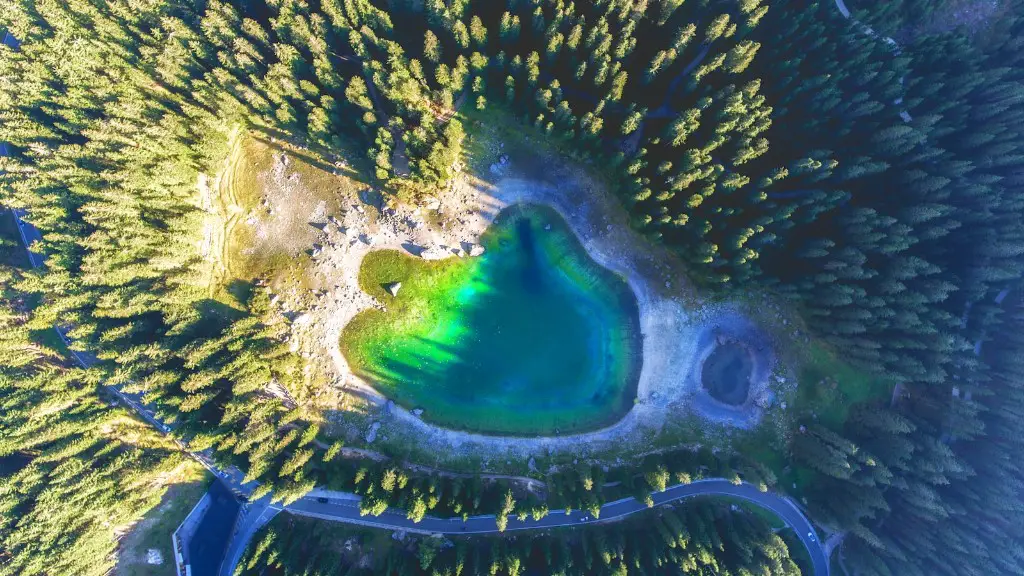Boasting nearly 11,500 square miles of pristine water and coastline, Lake Michigan is a popular destination for many tourists and locals alike. With its beautiful beaches, diverse wildlife, and vast array of activities, it’s no wonder that many people flock to its shores. But, as with any body of water, the question arises: Is Lake Michigan safe? This article will explore the potential for contamination, potential health risks, and tips for keeping safe in and around the lake.
Potential Contaminants
Lake Michigan is a natural body of fresh water that is home to a wide range of species, vegetation, and minerals. However, due to its close proximity to larger cities and industrial centers, there may be a number of man-made pollutants present in the lake, or in the water sources that connect to it. These pollutants may include heavy metals, industrial chemicals, sewage, and agricultural runoff.
Due to the presence of these pollutants, various health risks can arise. One of the main risk is exposure to high levels of lead. This can be due to the presence of lead pipes used throughout the city’s water distribution systems. In addition, agricultural runoff can contain numerous other contaminants, such as fertilizers, pesticides, and herbicides, which may all harm the health of humans and animals that may come into contact with the water.
Testing for Contaminants
Various organizations, such as the U.S. Environmental Protection Agency (EPA) and the state of Michigan, routinely test the water of Lake Michigan for contaminants. Commonly tested are nutrients, bacteria, and other pollutants. If any of these contaminants are found to be at unsafe levels, there will be risks associated with drinking, eating, or swimming in the water. For example, if a high level of E.coli is detected, the public health department would recommend avoiding swimming in the lake. Similarly, if lead is detected in the water, the EPA would alert the public and suggest avoiding contact with the water.
Health Risks
The most common health risks associated with contact with contaminated lake water is the potential for gastrointestinal illnesses, such as diarrhea and vomiting. Exposure can also lead to serious skin or respiratory illnesses. While these risks are typically low, they may be increased when multiple people are swimming in contaminated water simultaneously. In addition, contact with contaminated lake water can lead to long-term health problems, such as infertility, birth defects, and cancer.
Staying Safe in the Lake
To ensure that Lake Michigan remains a safe and healthy environment, it’s important to take the appropriate steps when it comes to limiting contaminants and avoiding potential health risks. First and foremost, avoid swimming or wading in lake water if there is any indication of potential pollution. Additionally, avoid swallowing lake water and keep your towels, food, and other items away from the water’s edge. Finally, if you’ve been in contact with lake water, be sure to wash your hands and clothing thoroughly before eating or entering your home.
Tips for a Healthy Lake
Aside from staying safe in the water, there are also measures that everyone can take to help keep the lake healthy. Primarily, individuals should try to limit their use of fertilizers and pesticides, as these can easily enter the water supply. Additionally, be sure to never pour motor oil or other contaminants into the lake, and ensure that sewage systems are properly maintained, to prevent the introduction of pollutants. Finally, be sure to follow all applicable regulations when it comes to fishing, boating, and other activities to avoid contributing to the further contamination of the lake.
Conservation Efforts
Various agencies, organizations, and individuals are actively working to conserve, protect, and improve the Lake Michigan ecosystem. These efforts include regular water quality testing, pollinator plantings, and the creation of buffer zones around the lake. Organizations are also working to educate the public on the importance of responsible actions, such as reducing the amount of plastic and other pollutants that enter the lake.
Conclusion
Lake Michigan is a beautiful and serene destination, and it is important to ensure that it remains safe and healthy. While there are potential contaminants and health risks that come with contact with the water, understanding the risks, taking the appropriate measures to protect yourself, and participating in conservation efforts will ensure that the lake remains a safe environment for generations to come.


